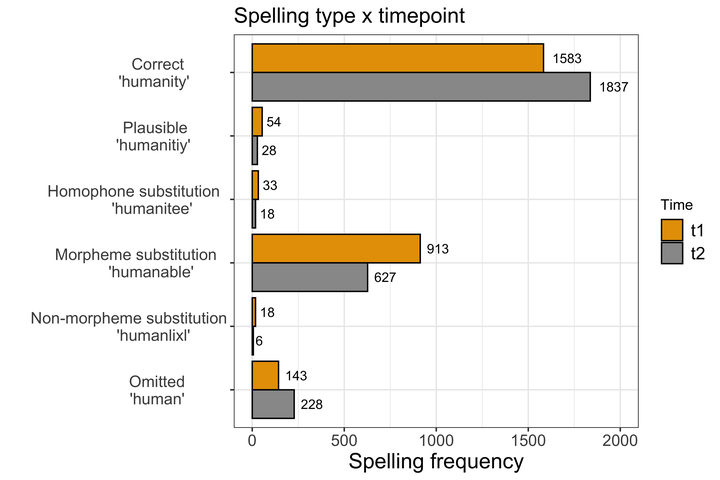
This project found that complex word production among English language learners is best explained as a function of their learning and exploitation of the distributional properties of the morphological structure of words.
Certain suffixes, like -ion in permission, occur more frequently in written language than others. Certain stems like produce can connect to many different suffixes: producer, production, reproduce, reproducer, reproducibility etc. We analyzed written production of 196 EFL students and tracked their development over time. We wanted to see if these distributional features had an impact on how they were able to learn complex words.
In addition to discovering that suffix frequency and morphological family size are important pieces of information for EFL students, we also found that, EFL students were better at applying the correct suffix type to stems by the end of the study duration (e.g.,humanity; human + ity), and made fewer morpheme substitution errors: when an incorrect suffix was applied to the stem form (e.g., humanable, human + able).